About Puglia
About Puglia
A Rich Cultural Heritage
As well as having a beautiful coastline Puglia is also renowned as a land of castles, fortresses and cathedrals. Many of the hill-top castles date from medieval times and still dominate the horizon today, keeping watch on the valleys below for invaders from the safety of their fortified walls.
Renaissance fortresses dot the coastline still surveying the sea for any signs of marauders. They often took advantage of existing castles which made them virtually impregnable and for interested enthusiasts, rich in history.
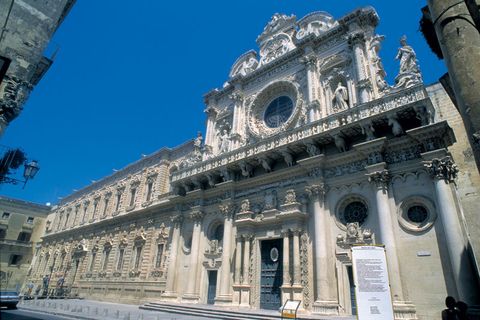
Many of these arhcitectural gems offer a fascinating day out, often hosting events and normally housing museums or exhibitions within their walls. In Gioia del Colle the castle in the town centre is also home to an archaeological museum, while the privately owned castle at Oria exhibits ancient coins, engraved gems, statues, bronzes and pottery dating from Roman through to medieval times.
With the fall of the empire came a less rosy period for the people of Puglia, constantly under attack from the Barbarians and forced to endure rebellions, pirate raids and several wars.
But with the arrival of the Normans the area began to prosper once more. Castles such as the one at San Vito dei Normanni sprang up, designed more for comfort and trade than the grim task of defence.
In more modern times Puglia developed economically with the introduction of better road and rail links and now modern industry and technology thrives alongside traditional farming and other industries.
Today the regional capital is Bari, and the other provincial capitals are Foggia, Brindisi, Lecce and Taranto. All offer a wealth of things to see and do, ensuring that any visitor to Puglia will not be lacking for cultural sustenance.

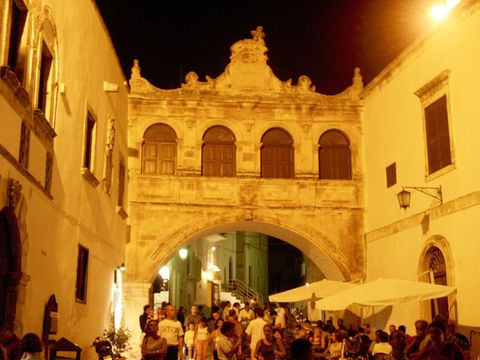
A Land of Sea and Sun
A stunning coastline, idyllic rural landscapes and a hot and sunny climate combine to make Apulia one of Italy's best treasured secrets and even today Puglia, to give its Italian name, is more popular as a summer retreat for Italian holiday-makers than for their foreign counterparts.
Puglia is a long thin region running down the Adriatic coast along the south and east of Italy's heel, so nothing is very far away from the beach. It's geographical location, linking Europe with Africa and the Middle East, has for millennia given it huge symbolism and no little importance as a meeting point for the diverse cultures which have helped shape our modern civilisation.
In northern Puglia, around Italy's spur, is the home of the Gargano National Park, a varied park of forest, arid step and sheer limestone cliffs which mantles the striking promontory.
Of the 270 or so species of nesting birds in Italy the park boasts an incredible 170 of them, testimony to its biodiversity, varied topology and the care with which it is all looked after by its proud people.
With such a conducive climate wine and olive oil are two of the region's most traditional and important products and this is reflected in the landscape, with the rich red soil hosting mile upon mile of ancient olive groves and vineyards.
But the Puglia landscape is much more than just vines and olive trees. It is a fascinating and unique tapestry of sand and stone, gentle rolling hills topped with the dazzling white architecture of the local towns, pasture and wheat fields, fruit orchards and stunning silent coves with crystal clear seas ideal for diving.
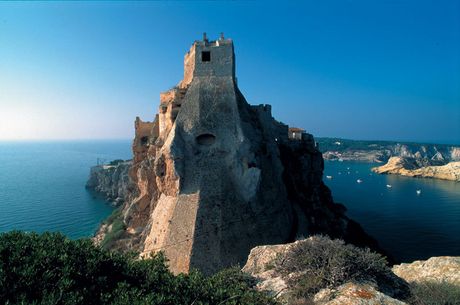

Medieval island castles and fortresses, sometimes with the Adriatic lapping at their very gates typify the coastline, along with rocky cliffs and sandy beaches, making Puglia a paradise for those with a love of the sea.
Naturally seafood is one of the principal staples on any menu but Puglia is also noted for its durum wheat and tomatoes, which form the basis for many mouth-watering pasta dishes.
And culturally Puglia is blessed with a host of museums and architectural and archaeological gems which recount the history of the region. From the trulli, the small beehive like dry-stone cathedrals that were traditionally the home of many in the area, to the masserie or farms, which take much of their inspired design from Roman villas and which still form the backbone of today's agricultural architecture.
In the larger towns and cities such as Bari and Lecce the variety of architecture is even greater and the latter, with its magnificent and ornate cathedral and other fine baroque architecture, rightly stakes claim to the title "Florence of the South."

Sites & Sounds von Apulien
In Apulien gibt es viele interessante Dinge zu sehen und zu tun, und die Menschen sind herzlich und leidenschaftlich - der einfachste Versuch, Italienisch zu sprechen, garantiert Ihnen einen herzlichen und freundlichen Empfang.
Es ist nicht überraschend, dass die Region Apulien von vielen italienischen Urlaubern für die Vielfalt der angebotenen Köstlichkeiten bevorzugt wird, von kulinarischen Wundern, die in den zahlreichen Restaurants serviert werden, bis hin zu einem reichen Kunst- und Geschichtsschatz, der das reiche Mosaik kultureller Einflüsse der Region bezeugt.
EINKAUFEN
Auf einer moderneren Basis ist Apulien ein wunderbarer Ort zum Einkaufen - vom Chic bis zur Antike bietet die Region für jeden Geschmack etwas. Die Märkte von Alberobello und Grumo Apulla sind besonders für diejenigen interessant, die ein Mitbringsel von Apulien oder ein originales Pugliese-Artefakt mitbringen möchten. Und die Märkte von Gallipoli und Copertino sind reich an interessanten Antiquitäten.
Für anspruchsvolle Modekäufer sind die schicken Boutiquen von Bari, Lecce und Foggia genau das Richtige.
Wein, Olivenöl und Nahrungsmittel sind ebenfalls ein wichtiger Bestandteil der Wirtschaft Apuliens.
Während der Sommermonate haben einige Städte ihre eigenen Antiquitätenmärkte im Freien. Sie bleiben bis mindestens Mitternacht geöffnet und sind auch ein geselliges Ereignis, das sich wunderbar mit den meisten italienischen Spielen, der Passeggiata, verbindet.
ORTE ZUM BESUCHEN
In Apulien gibt es eine Menge zu sehen und zu unternehmen - von Theater und Konzerten im Innen- und Außenbereich, Bootsfahrten, Wandern, Mountainbiken, Reiten oder einfach nur durch die vielen historischen Piazzas spazieren und die Atmosphäre genießen.
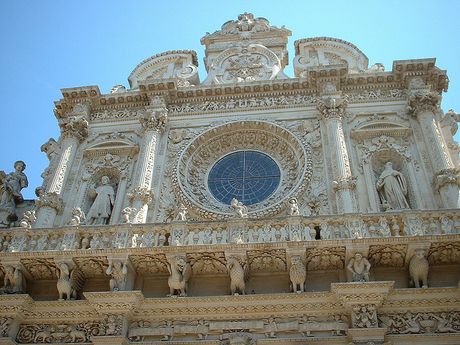

The area is rich in Roman and Greek archaeological sites and there is an abundance of fine art and architecture to absorb.
Puglia boasts many historic theatres, art galleries and museums. Historic towns are dotted across the region and numerous castles and fortresses also house their own museums.
And indoor and outdoor concerts, ranging from classical, jazz, to rock and pop are held in most towns.
For nightlife the student-filled city of Lecce is very lively and Bari too has a wide choice of clubs, bars and restaurants.
Smaller towns such as Martina Franca come to life in the summer months when outdoor festivals and events go on until late at night.
Galleries and Museums:
• Bari - Pinacoteca Provinciale
• Barletta - Museo Civico e Pinacoteca
• Brindisi - Museo Archeologico Provinciale
• Conversano - Ciclo della Gerusalemme Liberata
• Fasano - Museo Nazionale di Egnazia
• Foggia - Museo Civico e Pinacoteca Comunale
• Gioia del Colle - Museo Archeologico Nazionale
• Gravina in Puglia - Pinacoteca Civica
• Lecce - Museo Archeologico Provinciale
• Lucera - Museo Civico "G. Fiorelli"
• Manfredonia - Museo Archeologico Nazionale
• Monte Sant'Angelo - Museo delle Arti e Tradizioni Popolari del Gargano
• Ruvo di Puglia - Museo Archeologico Nazionale
• Ostuni - Museo di Civiltà Preclassiche della Murgia Meridionale
• Squinzano - Museo delle Arti e Tradizioni Popolari del Salento
• Taranto - Museo Archeologico Nazionale
Concerts and Music Festicals:
• Martina Franca: Festival della Valle D'Itria mid July-mid August
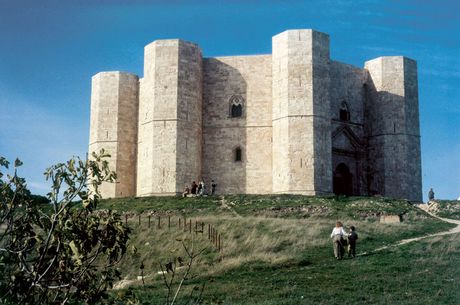

Lokale Feste
Sie reichen von kleinen Dorfangelegenheiten bis hin zu hoch organisierten, mehrwöchigen Veranstaltungen, wie dem Festival della Valle D'Itria, das jeden Juli und August in Martina Franca stattfindet und seit über 30 Jahren erfolgreich ist.
Open-Air-Konzerte, Opern, Theater und Live-Musik von Jazz bis zu traditioneller italienischer Musik sind während der verschiedenen Festivals, Sagra und Festivals in Apulien häufig anzutreffen.
Jede Stadt, die es wert ist, zu salzen, wirft jedes Jahr eine Party mit Namen, von Wein, Bier, Pizza oder traditionellen Festen und Sagras bis zu heidnischen Festen und Karnevalsveranstaltungen. Die Mehrheit findet aber keinesfalls im Sommer statt.
Und wenn Sie sich im August in der Provinz Taranto befinden, verpassen Sie nicht die surrealen Weltmeisterschaften für Schnurrbart und Bart, die jedes Jahr in Grottaglie stattfindet. Für Liebhaber eines wirklich beängstigenden Gesichtshaares ist dies ein Muss!
Das erste Wochenende im Mai ist in der Regel eines der wichtigsten Feste von Bari, das von San Nicola. Es ist die Rückkehr seiner Knochen aus der Türkei und ist eine leidenschaftliche Mischung aus Festen, Feuerwerkskörpern und Flottillen von Booten, die den Hafen füllen.
Viele andere religiöse Festtage werden auch das ganze Jahr über gefeiert und die meisten Städte haben einen Schutzpatron, den sie jedes Jahr in geeigneter Weise ehren. Normalerweise koordinieren örtliche Städte diese öffentlichen Veranstaltungen, sodass Sie alle besuchen können, wenn Sie möchten!
Alle Feste sind familienfreundlich, und selbst die kleinsten Kinder können in die kleinen Stunden laufen.
Nachfolgend sind nur einige der bekannteren Veranstaltungen aufgeführt, die jährlich stattfinden.
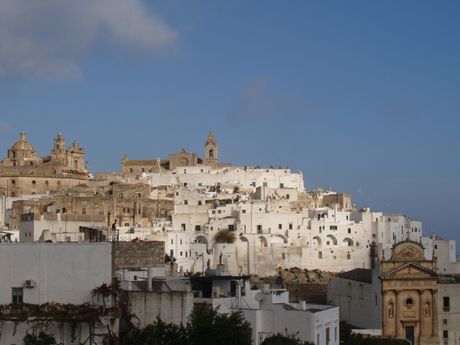
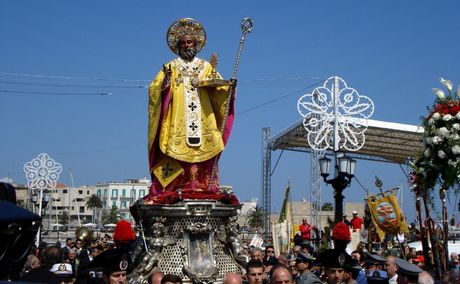
Ereignis
Karneval von Putignano
Fest des heiligen Nikolaus
Pferd Parato
Festival von Valle D'Itria
Tanz des Schwertes
Schnurrbart und Bärte
Platz
Putignano
Bari
Brindisi
Martina Franca
Ruffano
Grottaglie
Period
February
early May
mid June
mid July - mid August
mid August
August
Simply Delicious
Italy's Puglia region offers the visitor such a feast of culinary delights it really is difficult to know where to start. Food and wine is almost a religion in Puglia, as it is througout Italy. And to enjoy the vast range of traditional flavours on offer you are advised to take your time and do the job thoroughly.
Eating out means encountering a wonderful variety of Italian dishes, usually divided into three courses (antipasti, primo piatto and secondo piatto) followed by dessert, coffee and the choice of a mind-boggling array of usually very potent liqueurs, called "digestive". If done properly the whole thing can easily last two or three hours!
You will probably notice different names for restaurants apart from ristorante, such as osteria, trattoria, agriturismo and pizzeria, but rest assured that all serve up a range of great Italian flavours to savour. Pizzerias generally open only in the evening because they use large wood ovens, but pizza can be bought by the slice from take-aways at lunchtime as well.
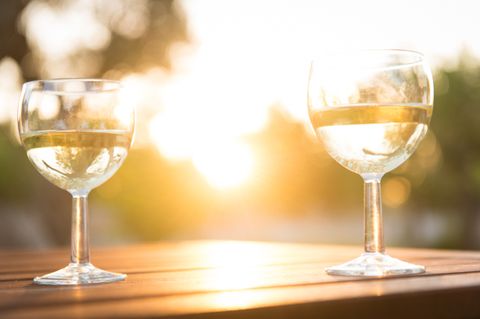
Seafood is excellent along the Adriatic coast, while inland traditional cooking of local organic produce is very much to the fore. Local dishes also include tasty sun-dried vegetables of every type imaginable, making Puglia one of the more vegetarian friendly regions of Italy.
The very fertile soil and hot dry climate of Puglia made it the bread basket of Roman times and today the region is still envied for the fine durum wheat it produces, which goes on to make the famed Altamura bread and various delicious types of pasta, including the celebrated orecchiette (ear-shaped pasta) often eaten with cime di rapa.
Also highly prized are the wines of Puglia, among them the D.O.C. wines of Barletta, Castel del Monte, Gioia del Colle, Locorotondo, Copertino, Lizzano, Martina Franca, Squinzano and for a sweet conclusion to the meal, Moscato di Trani.

Many towns and villages in Italy's Puglia region have their own food and wine events. Here is a small selection of them:
January
. Festa di Sant' Antonio Abate (Novoli)
. Festa di Sant' Antonio Abate (Giovinazzo)
. Festa di Sant' Antonio Abate e fiera del fischietto (Rutigliano)
. Sagra di Sant'Antonio Abate (Rutigliano)
February
. Sagra della Farrata (Manfredonia)
. Festa di San Valentino (Vico del Gargano)
March
. Sagra di San Giuseppe (San Cassiano di Lecce)
April
. Fiera d'Aprile - "Sudgheusia" (Andria)
. Sagra del Pesce "a sarsa" (Castro)
. Premio Biol (Bitonio)
June
. Marangiane in Festa (Castri di Lecce)
July
. Sagra della Pitta Rustica (Castrignano de' Greci)
August
. Mercatino del Gusto (Magile)
. La focaccia piu' lunga del mondo (Mottola)
. Etnica World Music Festival (Diso)
. XI Sagra del Pesce e dei Prodotti Tipici (Cagnano Varano)
September
. La Ghironda (Martina Franca)
. Gioie del Mediterraneo (Gioia del Colle)
October
. Tra santi e santini (Taranto)
. "Lu paniri te e ssite" e festa del Maiale (Palmariggi)
. Sagra della"Tagghiarin" e festa della Madonna della Stella (Palagiano)
. Sagra "te la vulìa cazzata" (Martano)
. XVII Sagra della "pittula" (Vernole)
. Sagra del Maiale (Maggiano)
November
. Bacco nelle Gnostre (Noci)
. EQVINUM (Santeramo / Santeramo in Colle)
. Wine Fest (Gioia del Colle)
December
. Spongano in fiera (Spongano)
. Sagra della Pettola (Borgo Antico di Rutigliano / Rutigliano)
. Pettole nelle Gnostre e Cioccolato in sagra (Parco Letterario "Formiche di Puglia" / Noci)
. Presepe Vivente di Grumo Appula (Centro parrocchiale Monteverde / Grumo Appula)
Teilen
Tweet
Teilen
E-Mail
